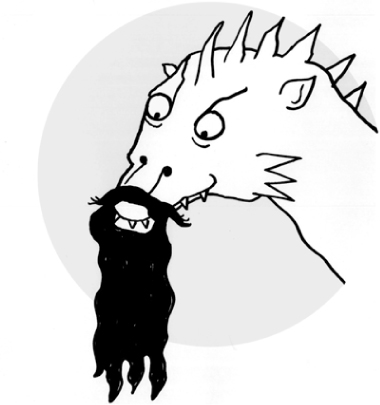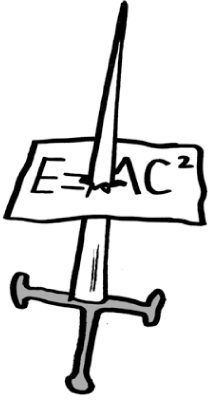CHAPTER 9
HOW WILL IT END?

 Will It All End in Fire or Ice?
Will It All End in Fire or Ice? 
Fire and Ice by Robert Frost
Some say the world will end in fire,
Some say in ice.
From what I’ve tasted of desire
I hold with those who favor fire.
But if it had to perish twice,
I think I know enough of hate
To say that for destruction ice
Is also great
And would suffice.
George RR Martin has said that the great, overarching title of his Game of Thrones novel series, A Song of Ice and Fire, was in part inspired by this poem. A lesser-known story is the poem’s connection to the American astronomer Harlow Shapley, who is celebrated for working out the size of the Milky Way, and also theorising about where icy planets could be found in the universe. Shapley was the doctoral supervisor of Cecilia Payne-Gaposchkin, who in turn worked out what the sun is made of via the spectra from its flames, and how to measure the elements that make up other stars from how they shine.
In 1960 he was asked by the poet Robert Frost how the world would end. Shapley was the astronomer of his day, Frost the poet (he won a Pulitzer prize for the collection ‘Fire and Ice’ appeared in), so this was quite the conversation.
The resulting poem is a tricky work to pin down. It’s a very simple verse, until you look closer. The world will end–but which ‘world’? Reading through the lines, you get a vertiginous feeling; we’re simultaneously wondering about the fate of our whole planet and a single human heart. ‘I will not die but the world will end,’ said Frost’s contemporary Ayn Rand the Russian-born American novelist and philosopher (with typical self-effacement.) Do we know what will happen to the Earth in the end? Do we know what will happen to us?
This dizzying perspective seems to echo through A Song of Ice and Fire–we feel our way through a vast and complex world, but each chapter is seen through the eyes of a single character.
George RR Martin has explicity said that the seasons of Ice and Fire are controlled by magic. But such elemental forces also shape the climate of our world. Could they offer us clues about the battles to come? Is there any astronomical explanation behind the summers and winters in Westeros going on so long?–(they are unpredictable and can last for several years). Presumably, as on Earth, a year is defined as one orbit of the planet around its sun or–if the inhabitants still believe that the sun goes around the Earth–by one complete circuit of the sun through the background constellations of the zodiac.
 Solar Variability
Solar Variability 
Lets tour the solar system with Dr Kukula to discover more…
The Earth’s climate is powered by the energy it receives from the sun in the form of heat and light, so any changes in the energy output of the sun will also affect our climate. The sun is actually quite a stable star but, even so, the turbulent processes inside it do result in a certain amount of variability. Most obviously, activity on the solar surface–including sunspots, solar flares and explosions of gas known as coronal mass ejections–increases and decreases over an 11-year cycle, and this does have a measurable effect on the Earth’s climate. However, the effect is very small–much smaller than seasonal variations in temperature–and, unlike the seasons in Game of Thrones, its 11-year period is relatively reliable and obvious.
In the late 1800s, by studying records of sunspot numbers spanning several centuries, Greenwich Royal Observatory astronomers Walter and Annie Maunder noticed that there was a period between 1645 and 1715 when sunspot activity was virtually non-existent, even at the expected peaks of the 11-year cycle. Interestingly, this period of suppressed activity, now known as the ‘Maunder Minimum’, seems to coincide with the most intense phase of the Little Ice Age, a period of abnormally cold winters in Northern Europe.
It is still unclear whether there is a direct connection between the lack of activity on the sun and the change in continental climate, but one theory proposes that enhanced solar ultraviolet output during a period of suppressed sunspots would be preferentially absorbed in the Earth’s upper atmosphere, causing it to expand, and in turn diverting the high-altitude jet stream which shepherds weather systems across the North Atlantic to Europe. If a similarly localised process occurs in the world of Game of Thrones this might explain why the colder conditions predominantly affect the continent of Westeros.
The internal physics of the sun are still not fully understood and so the processes that triggered the Maunder Minimum remain unpredictable. Other similar events–the Spörer Minimum (1450–1540) and the Dalton Minimum (1790–1820)–have also been identified, but with no obvious pattern. The relative weakness of the most recent 11-year sunspot cycle has even led some solar physicists to speculate that we might be about to enter another prolonged solar minimum, although this idea is controversial.
The most extreme example of solar activity in historical times actually sounds like rather a refined soiree. During the Carrington Event of 1859, a tremendous solar flare on the sun launched a huge coronal mass ejection directly towards Earth. When the cloud of high-speed plasma struck the Earth’s magnetic field it triggered powerful auroral displays in the upper atmosphere; the northern and southern lights were visible even in places close to the equator. As the shockwaves passed through our planet’s magnetic field, electric currents were generated in the long-distance cables of the telegraph network, stunning operators with electric shocks. If such a flare occurred today Dr Kukula, our satellite, phone and power networks would be crippled.
Like the seasons in Game of Thrones, solar activity is unpredictable. So we can imagine their sun as more variable and temperamental than our own, leading to shorter, more intense and more frequent sunspot minima that correlate with the erratic seasons of Westeros. Some stars can display even more violent activity–‘superflares’ up to a million times as powerful as the Carrington Event.

The world of Game of Thrones is a pre-industrial society where technology seems to have remained at a medieval level for thousands of years, and perhaps it’s just as well. If the Game of Thrones sun is indeed a highly active star then erratic climate variations wouldn’t be the only problem. Any civilisation reliant on electric power and satellite communications would suffer constant catastrophic setbacks due to solar outbursts. But luckily ravens aren’t affected by coronal mass ejections. They may give an extra ‘caww’ but they keep on flying.
 Comet Con
Comet Con 
It’s widely accepted that the collision of a comet or asteroid with the Earth 66 million years ago was the main factor in the extinction of the dinosaurs. Vast clouds of dust generated by the impact would have spread out across the upper atmosphere, enveloping the globe and drastically reducing the amount of solar radiation reaching the ground. This would have plunged the whole Earth into a cold, dark ‘impact winter’ lasting for months or even years.
Dr Kukula tells me that some scientists have suggested that less devastating collisions might be responsible for various, localised climate changes–such as the Younger Dryas, a marked cooling of the northern hemisphere around 13,000 years ago–but this is still controversial. And given the utter devastation that a comet crash causes, people would presumably have noticed such an occurrence in Game of Thrones if every Westeros winter was triggered by such an impact.
Still, there might be a gentler way in which comets could plunge a planet into a prolonged winter. Each time it swings close to the sun on its elongated orbit, the icy surface of a comet is warmed by solar radiation, causing it to eject vast clouds of dust and vapour that go on to form a tail millions of kilometres long. Long after the comet itself has returned to the outer regions of the solar system this dust hangs around, close to the sun, and whenever a planet passes through it the larger particles burn up in the atmosphere, producing a meteor shower.
If a particularly dense clump of dust is encountered, the resulting shower can be spectacular, like the Leonid shower of November 1833, which lit up the sky like a firework display for several hours. However, the smaller grains can enter the atmosphere intact–and in sufficient numbers they could conceivably go on to have a cooling effect on the climate.
In 1705 the English mathematician and astronomer Edmond Halley calculated the orbit of his famous comet, working out that it takes 76 years to complete one orbit around the sun. But before that comets were considered to be mysterious and unpredictable visitors.
In Game of Thrones, the approaching winter is heralded by the appearance of a distinctive red comet in the sky. (The comet or ‘bleeding star’ also heralds the return of magic and dragons to the world of course.) In astronomy, reddening is often the result of light passing through large amounts of dust. Perhaps the World of Ice and Fire exists in a solar system with numerous comets rich in very fine dust. Astronomers have already detected several systems in which comets are many times more common than they are in our own. Any planets in these systems might be subject to heavy bombardment as well as unpredictable variations in climate due to lingering comet dust.
 Everyone’s a Winner
Everyone’s a Winner 
As the sun and the other stars orbit around the centre of the galaxy, they periodically pass through the denser regions of stars, gas and dust that make up its spiral arms. When this happens there is always the possibility that they might pass through a ‘giant molecular cloud’–hundreds of light years across–thick with gas and dark space dust.
Normally, the constant outward pressure of the sun’s solar wind keeps this stuff out of our solar system, but inside a giant molecular cloud some of the gas and dust would inevitably penetrate, coming between the Earth and the sun and blocking some of the solar heat and light. The resulting decrease in solar radiation reaching the Earth would have a cooling effect on our climate and might cause it to flip into a more wintery state according to Dr Kukula.
Passage through the cloud might take millions of years and the amount of dust-induced screening could vary year by year as the solar system passed through regions of increasing and decreasing dust density–an unpredictable journey that would leave its mark in the form of constant changes of climate on the system’s planets.

Ultimately, when our world ends it will probably go the same way as Mercury and Venus–swallowed by our expanding fiery sun. But it’s possible something of our Earth could survive, even millions of years into the future when our sun has become a red dwarf. Water molecules left hidden in the rocks that once made up Earth will break up and float through the universe. One day they may coalesce and grow, and over millions of years new planets will form, warmed by a new sun, but cooled by the water that was once ours. Who knows what will happen to this new planet, what stories will be told there? Ice and Fire could both win.
